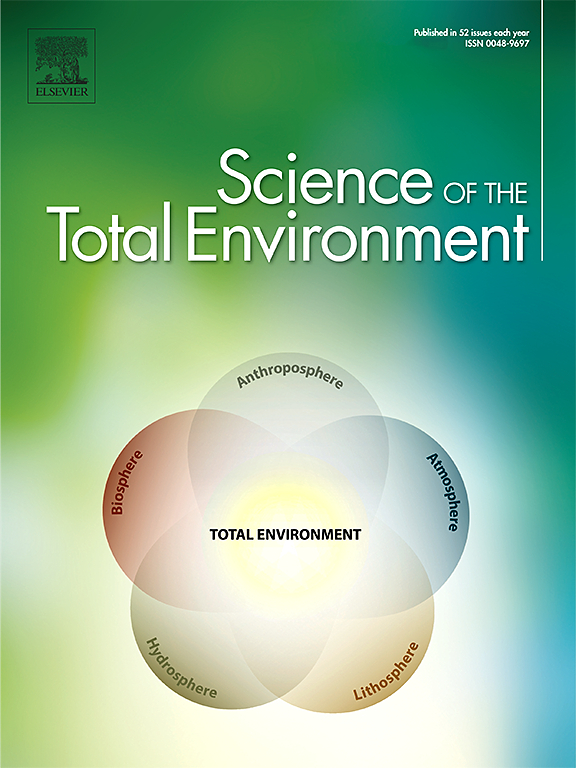Amphidinium carterae growth in hydroponic wastewater. A sustainable approach to a microalgae-based process promoting a circular bioeconomy
IF 8.2
1区 环境科学与生态学
Q1 ENVIRONMENTAL SCIENCES
引用次数: 0
Abstract
Hydroponic cultivation is being increasingly used worldwide for horticultural production. However, this technique consumes large quantities of freshwater and produces significant amounts of wastewater. Effluent wastewater from hydroponic cultures may contain high nitrogen (N) and phosphorus (P) concentrations, thus contributing to soil, surface, and subsurface water pollution if directly discharged into the environment; it also potentially leads to ecosystem degradation. In the present work, a synthetic hydroponic effluent wastewater was formulated to evaluate the potential of a marine microalga to remove the main nutrients (N and P) and to test its suitability for sustainable, large-scale cultivation. The marine dinoflagellate microalga Amphidinium carterae successfully removed 100 % of the N and P from the hydroponic wastewater. The formulation yielded comparable biomass yields (0.5 g L−1) to those of the same culture grown in a control medium but considerably increased the production of carotenoids (40 %), polyunsaturated fatty acids (17 %), and, significantly, amphidinols (56 %). Hence, the use of A. carterae to treat and valorise hydroponic effluents shows significant promise, supporting further investigation into utilizing hydroponic wastewater from different origins to cultivate marine microalgae that can then be used to produce agricultural bio-based fungicides and other bioproducts in line with the principles of the circular bioeconomy.

求助全文
约1分钟内获得全文
求助全文
来源期刊

Science of the Total Environment
环境科学-环境科学
CiteScore
17.60
自引率
10.20%
发文量
8726
审稿时长
2.4 months
期刊介绍:
The Science of the Total Environment is an international journal dedicated to scientific research on the environment and its interaction with humanity. It covers a wide range of disciplines and seeks to publish innovative, hypothesis-driven, and impactful research that explores the entire environment, including the atmosphere, lithosphere, hydrosphere, biosphere, and anthroposphere.
The journal's updated Aims & Scope emphasizes the importance of interdisciplinary environmental research with broad impact. Priority is given to studies that advance fundamental understanding and explore the interconnectedness of multiple environmental spheres. Field studies are preferred, while laboratory experiments must demonstrate significant methodological advancements or mechanistic insights with direct relevance to the environment.
 求助内容:
求助内容: 应助结果提醒方式:
应助结果提醒方式:


